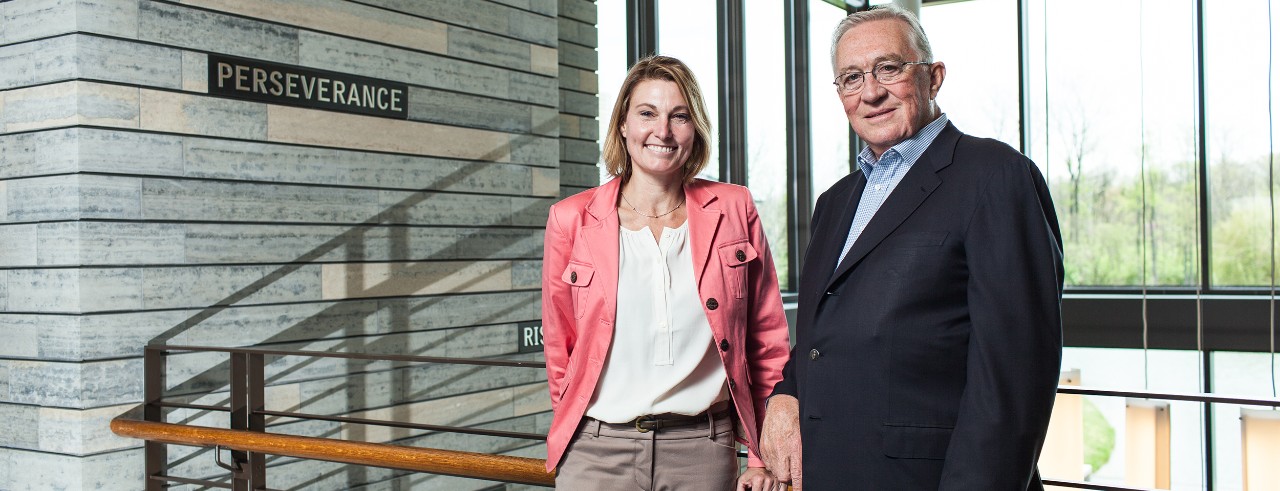
UC Goering Center news
How to turn uncertainty into action
By Joni Fedders
Uncertainty is one of the most panic-inducing emotions for any business owner. In a climate of fear, anxiety and unpredictability, you may not be able to see the light at the end of the tunnel – and you’re not alone. Business leaders everywhere are feeling this same feeling, and facing the same question: Where do we go from here?
Where we go will be different for every business; in a climate where many factors are out of our control, it’s difficult to know where we’ll be even three months from now. But how we move forward is within our control, and the path forward should be proactive, intentional and based in conscious leadership.
As you look forward and grapple with what the future looks like for you, your team and your business, empower your path forward with an exercise that enables you to see opportunity in the face of uncertainty. Here’s how to proceed:
1. Identify what could change
Change is inevitable. Of these elements of your business, where could you experience the most noticeable shifts given the changes you’re seeing in the external environment? We’ve included a non-exhaustive list for you below; modify it appropriately so it meets your business needs:
- Cash flow
- Customers
- Workforce and infrastructure
- Sources of leads
- Sales and business development
- Design and user experience
- Communications
2. Address potential future difficulties
Using your refined list of changeable elements, answer the question in each category, “What could get more difficult?” This process helps in two ways: First, the future becomes less uncertain. The pain and panic we feel around uncertainty often has to do with its unpredictability; when we put pen to paper and identify what could change, we take away some of that uncertainty and the power it holds over us. Second, it allows you to foresee potential problems and prepare for them. Which is what we’ll do in the next step.
3. Reframe difficulties as opportunities
Now go back through each element of your business and its potential difficulties, and change the story, answering, “What opportunity does that present?”
For example: A potential future difficulty in your workforce might be, "Our team will need to work remotely and we could become disconnected and lose our cultural magic."
Reframed as an opportunity, that difficulty could look like, "Our team could explore new ways of staying connected digitally that we could continue to use indefinitely, empowering more workplace flexibility and making it easier for our team members to balance work and home life."
Or, another example: A potential future difficulty for the cash flow of a professional cleaning company might be, "Our customers are closing their offices indefinitely and have paused all vendor services until their workforce returns to their office. Our cash flow could stop any day."
Reframed as an opportunity, that difficulty could become, "When our customers return to work, they’re going to be more concerned about sanitation and cleanliness than ever. What resources and services can we prepare to provide them? How can we prepare our internal team and our marketing materials to communicate these new services?"
Or, a second reframing could say, "While our B2B business is on hold, individuals and families are highly concerned about the cleanliness of their homes. How can we gain access to this new market who needs our services?"
4. Uncover what needs to be true to pursue the opportunity
At this point, you’re on the path walking away from uncertainty and toward empowerment. As a final step, identify what needs to be true in order for you to take advantage of the opportunity at hand.
In our example above, here’s what needs to be true for the cleaning company to thrive in their new B2C market:
- Families need to desire our services;
- Families need to feel comfortable letting us into their homes;
- Families need to be able to afford our services;
- Our teams need to feel comfortable offering these new services;
- Our teams need to be healthy to deliver these services.
Now you are empowered to continue your journey to confirming the truth of the above circumstances. You can begin to perform internal and external research to determine if there’s truly an opportunity here for you to pursue. And you can go into the future more confident than you were yesterday.
While you’re still largely out of control of the environment around you, you’re taking proactive steps to find clarity in uncertain times. You’re being proactive. You’re being intentional. And you’re being a conscious leader.
Joni Fedders is president of Aileron. Reach Joni at 937-669-6507.
About the Goering Center for Family & Private Business
Established in 1989, the Goering Center serves more than 400 member companies, making it North America’s largest university-based educational non-profit center for family and private businesses. The Center’s mission is to nurture and educate family and private businesses to drive a vibrant economy. Affiliation with the Carl H. Lindner College of Business at the University of Cincinnati provides access to a vast resource of business programing and expertise. Goering Center members receive real-world insights that enlighten, strengthen and prolong family and private business success. For more information on the Center, participation and membership visit goering.uc.edu.
Related Stories
Is your personal data protected?
December 13, 2023
From phishing attacks, malware and account hijacking to removable media, denials of service and intellectual property theft, cybersecurity incidents are constantly evolving and the impacts are becoming more severe.
Wrongful collection of data: Reduce the risk
December 13, 2023
The law tends to lag a bit behind the rapid evolutionary pace of the technology and software that we use in our businesses.
Managing third-party cyber risk that increases your organizational exposure
November 8, 2023
As organizations increasingly turn to independent contractors for products and services, third-party breaches have become a top cyber threat.
